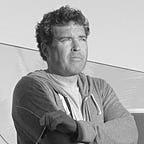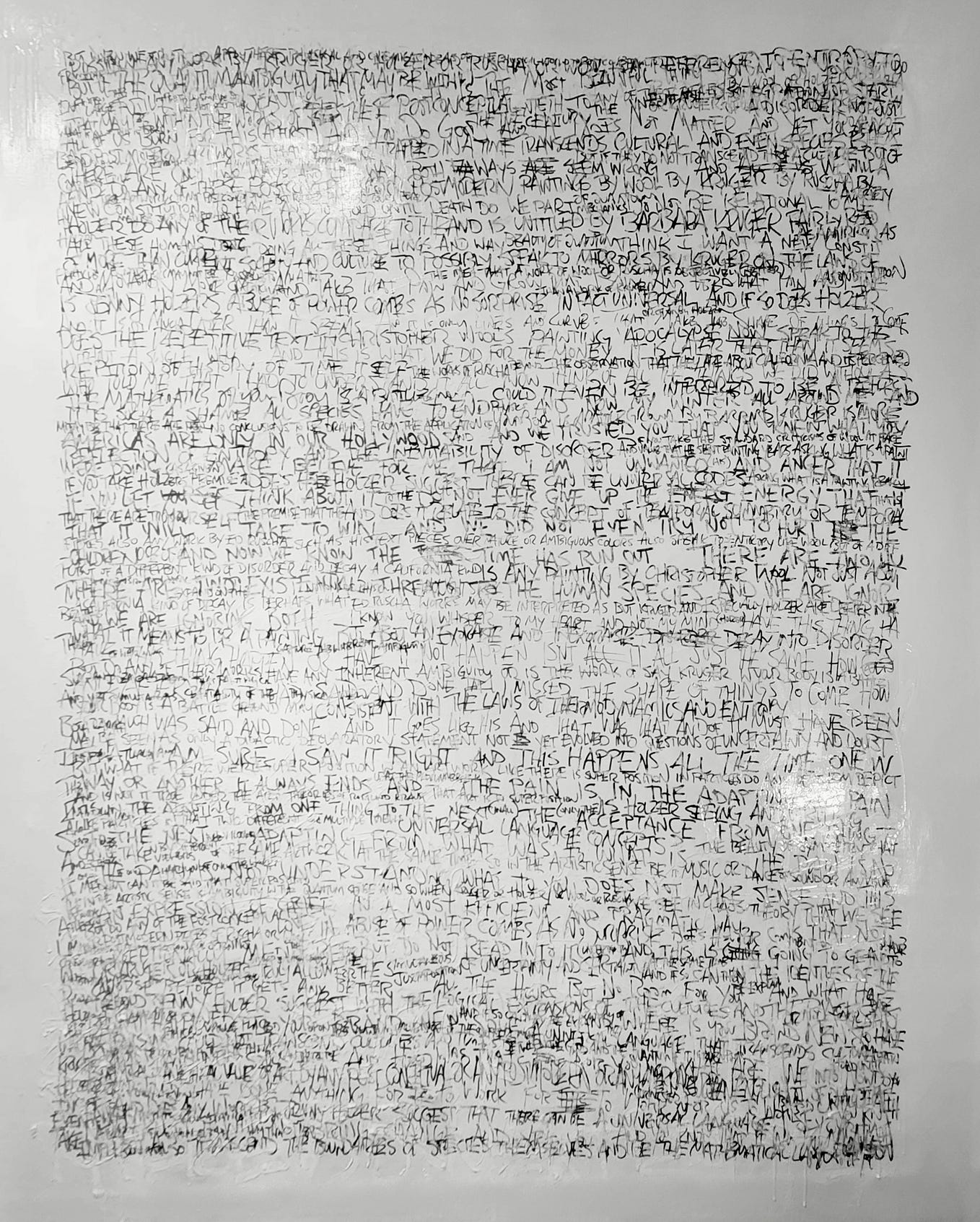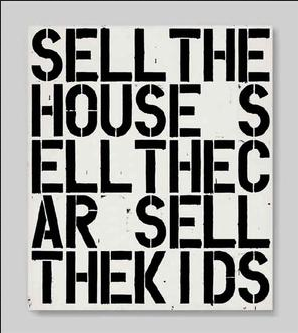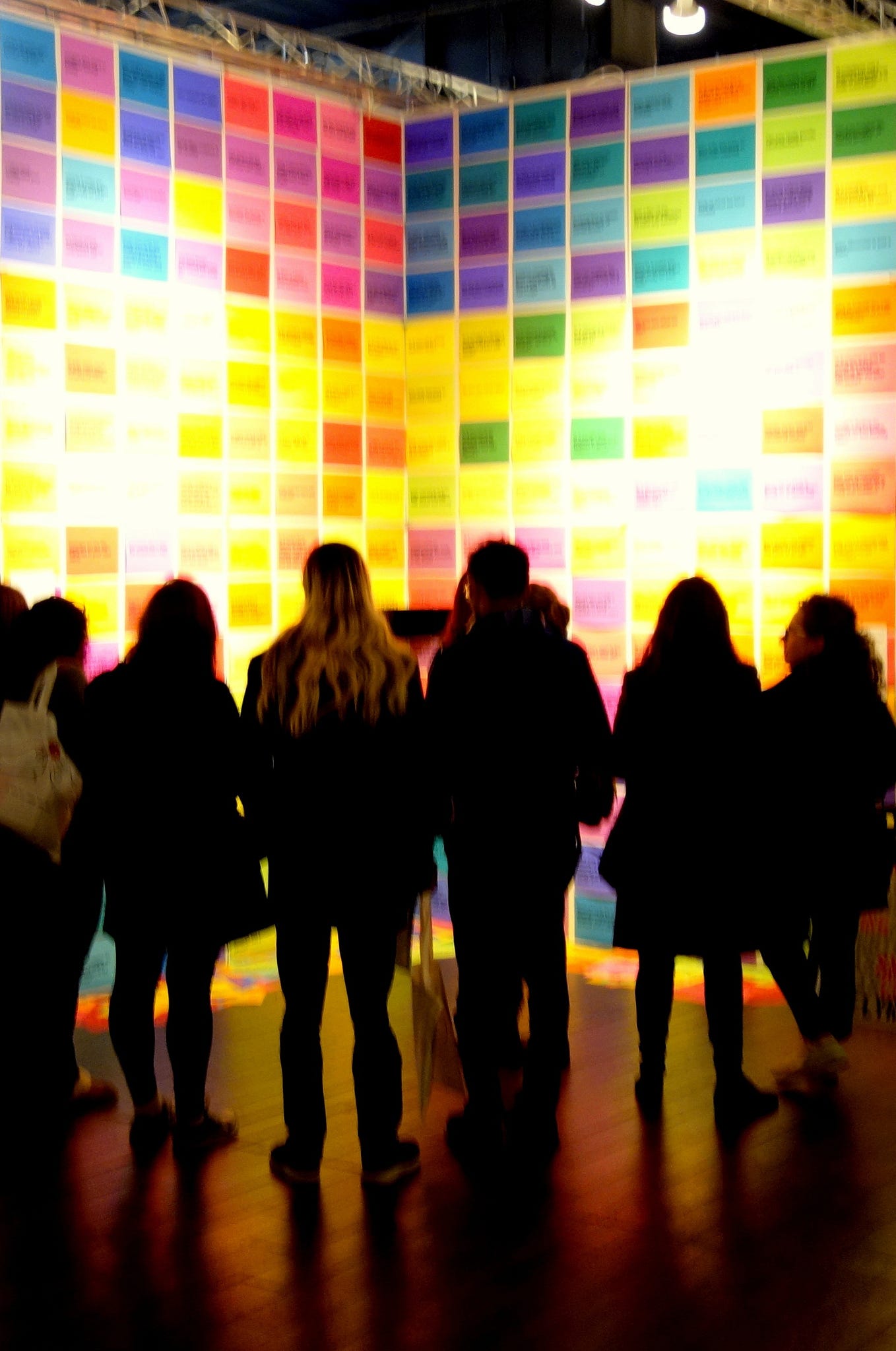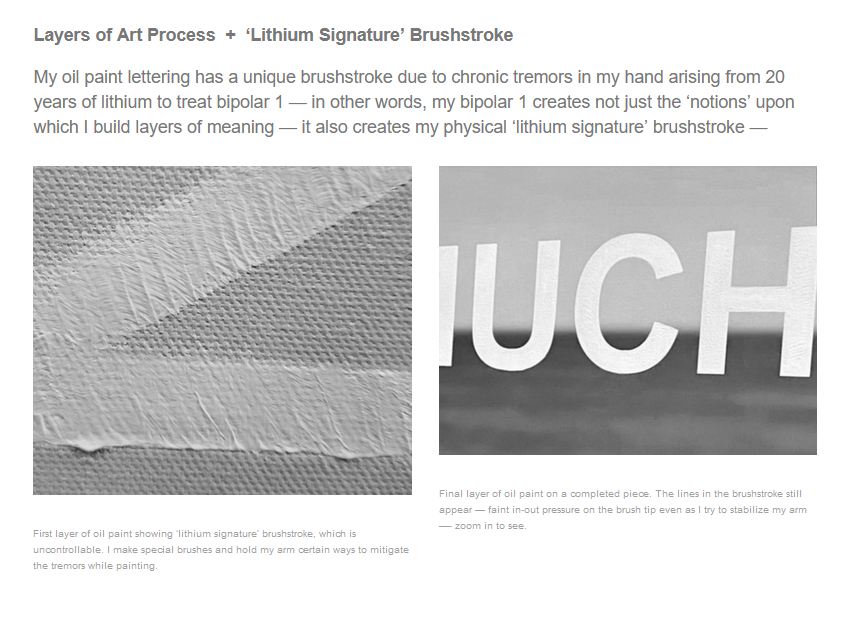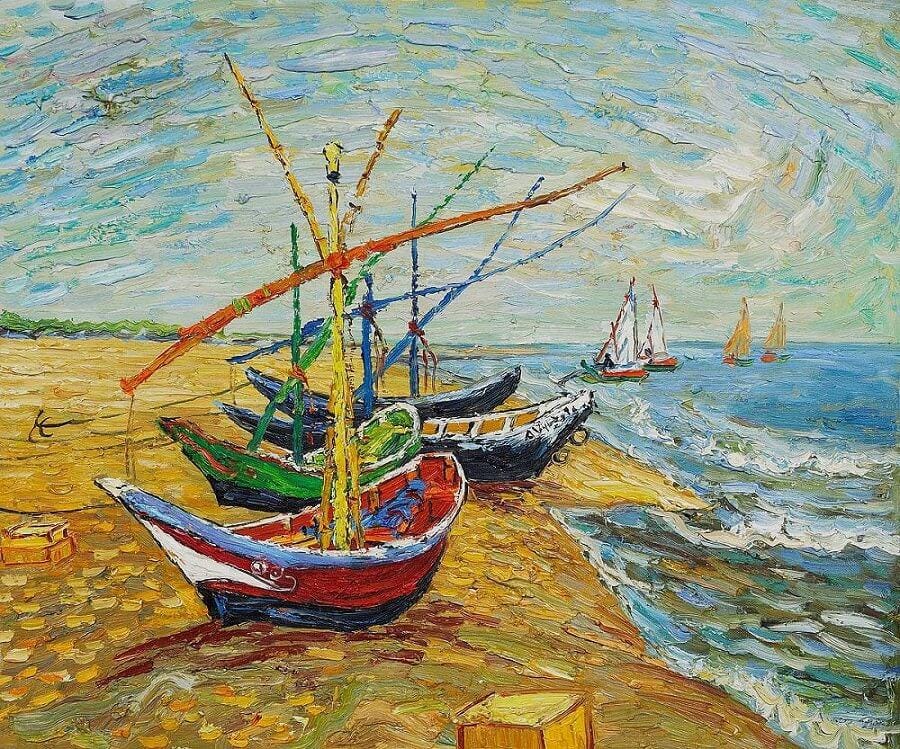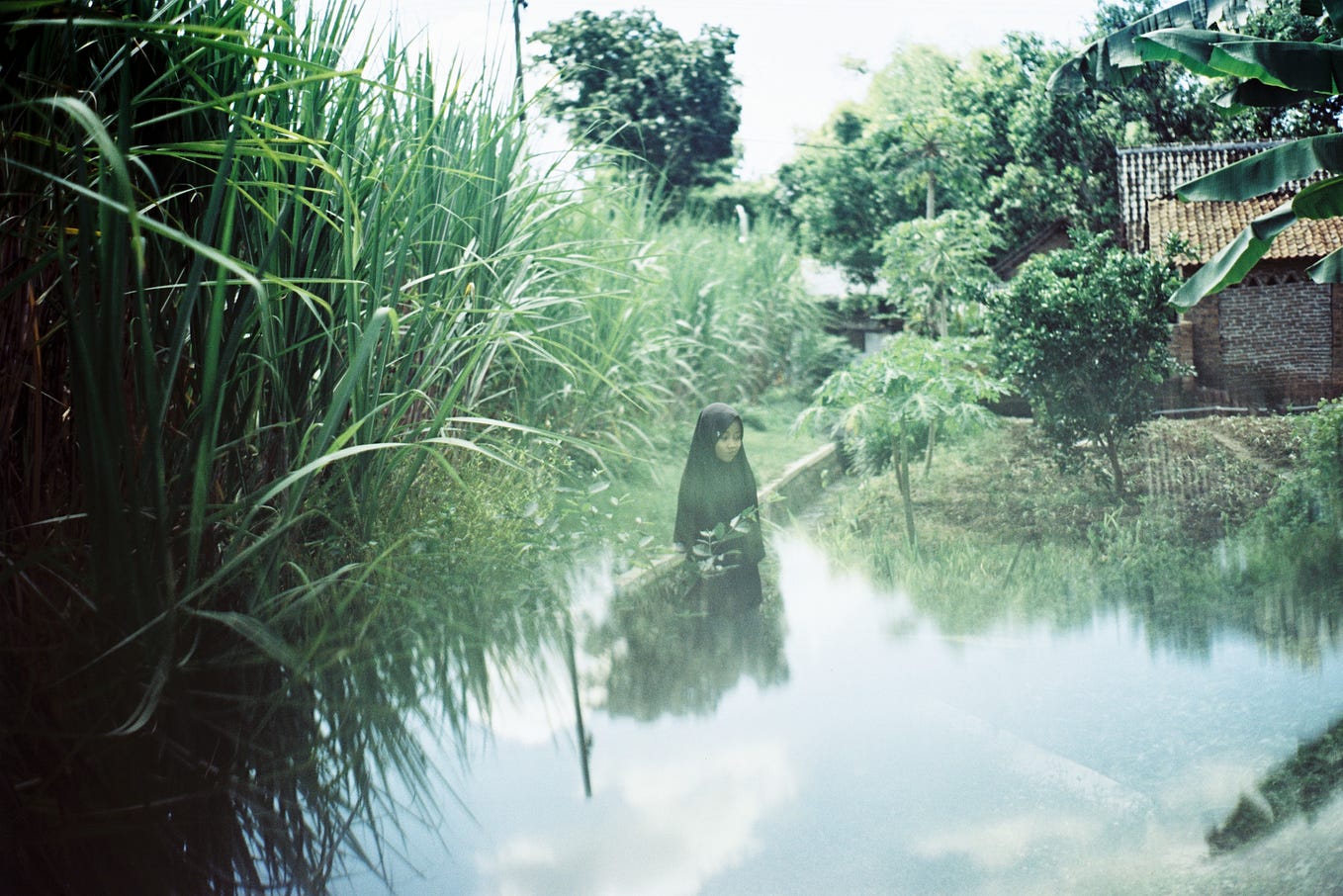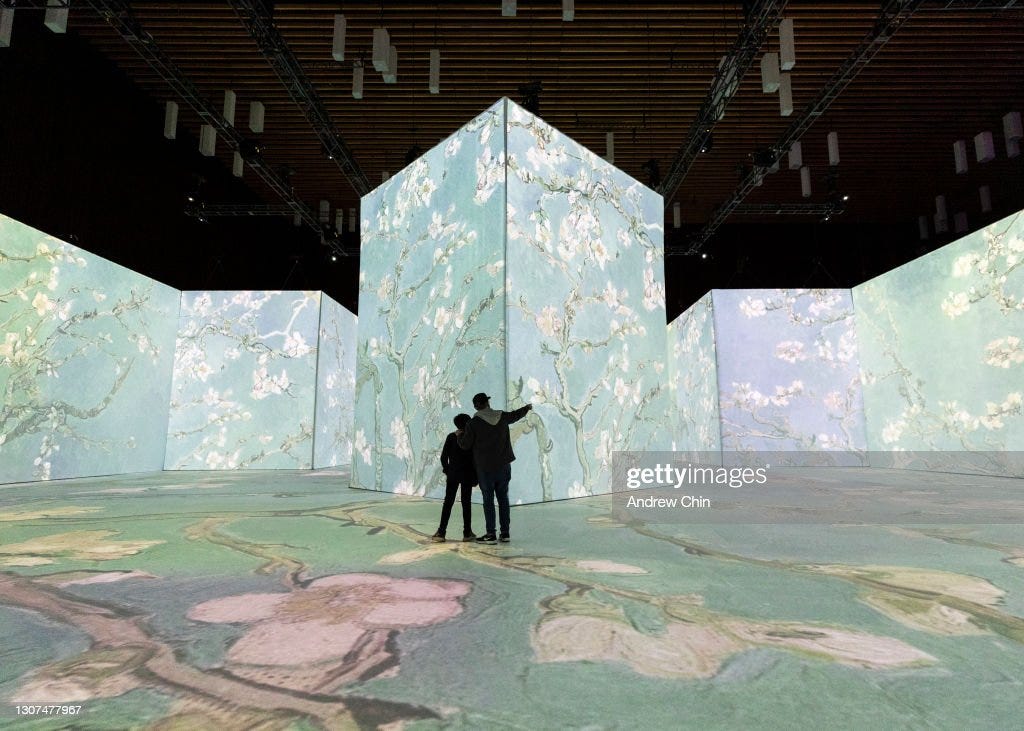Text-Based Art — More On New Histories, Definitions, and Theories
Or, The Who-What-When-Where-How-and-Why about Text Art.
Or, Everything You Wanted To Know About Art With Words But Were Afraid to Ask.
Or, Do I Really Have To Worry About A Definition?
* * *
Let’s take these in reverse order. No, you don’t need to have a definition to think text-based art is cool. Life is too short to miss the joy of “art” that has “words.” Stay tuned for what that can mean . . .
* * *
But since it’s true that definitions can help, here’s one that’s (a) sort of simple but also (b) hints at all of the cool nuance when you mix words and image —
* * *
In text-based art, also known as art with words, artists and viewers additionally interact through visual language, not just images, objects, or sounds. Letters and words can be aesthetically pleasing all on their own, or they can contribute to meaning, or both. Text-based art can make art accessible, and allow for diverse interpretations, because it can inspire not only emotions but also views and thoughts. In art with words, artists have even more ways to express themselves, and viewers have even more ways to experience the artist’s work, because text-based art can not only inspire subjective feelings; it can also inspire objective discussions and dialogues amongst viewers, no matter where or how the text-based art is seen.
* * *
Well, that leaves me thinking maybe text art isn’t going to be very cool. I’m exhausted just reading that. You? So let’s get right to some images. They make for a better definition of text-based art — because definitions are all about what is in and what is not —
* * *
THIS IS TEXT-BASED ART — EXAMPLE ONE — Believe it or not, this is a form of text-based art. Normally thought of as one of the oldest known purely figurative paintings by, this is a depiction of an unknown bovine animal discovered in the Lubang Jeriji Saléh cave and dated to be more than 40,000 (perhaps as old as 52,000) years old. Stay tuned for why this fits within a broad definition of text based art (but not, as a distinction, art with words). Already that distinction makes me curious. You?
* * *
THIS IS TEXT-BASED ART — EXAMPLE TWO — This is Oracle Bone Script (Chinese: 甲骨文; pinyin: jiǎgǔwén) — an ancient form of Chinese characters that were engraved on oracle bones — animal bones or turtle plastrons used in pyromantic divination. Oracle bone script was used in the late 2nd millennium BC, and is the earliest known form of Chinese writing. I’m including it here not just as an example of text-based art, but as an example of use of, broadly speaking, symbols, letters, and, here, characters in art — and as art. I’m also including it here because text-based art, of course, does not have to be in the language of English. Plus text-based art existed before some white dudes in the 1960s copied the idea and called it “text-based-conceptual art.” I mean, cultures long ago on continents having nothing to do with New York City are where text-based art comes from. I kid you not, some of the top museums in the world provide a “history” of text-based art that does not start about 50 years ago in one city in the United States. Simply ridiculous and how many fingers do you have to count the cultural, ethnic, and racial biases that cause such inexcusable positions. More on this later, it’s that reprehensible.
* * *
THIS IS TEXT-BASED ART EXAMPLE THREE — We are jumping ahead several THOUSAND years to what may seem exactly like text-based art to you. And it is. But it is so much more. This is foundational, seminal, groundbreaking, incredibly powerful blend of art and image and word and protest — and I have goosebumps just looking at it and thinking about it. Barbara Kruger is the artist and her work, not just this one, defines entire swaths of what art with words means, and can mean, and can do. Barbara Kruger as a text-based artist and this piece will be the sole focus of a latter post. For now, big picture, three points: One, see how many things are going on here? — The big one is that the text is a declarative statement directed AT you. Stay tuned for what that ultimately means in the world of text art. Two, did you notice the text is not some cliche or idiom or inside joke that requires mastery of the language of English and its bizarre constructions? — This art is serious about some of the most universal issues in the world — and it uses language that starts to head towards universal comprehension. Three, was this incredible work done by one of the white males back in the 1960s discussed above? Nope. This work was done by Barbara Kruger. But according to the gospel of the museums, only white men are to thank for text-based art. But enough of them. You have no idea how much this piece re-wrote all the rules. Actually, you do, or will, if you stay tuned.
The copyright is owned by Barbara Kruger and the Broad (Los Angeles). This is a full screen shot to give both Ms. Kruger and the Broad / The Broad Art Foundation full credit. My intended use here is educational and thus I believe fair use. Since Ms. Kruger is one of my text-art idols, if by any chance this usage is an issue in any way, please reach out and I will make it right. OK, back to the text-based art.
* * *
THIS IS TEXT-BASED ART EXAMPLE FOUR — OK, so conceptually here’s the tough one — Is this text-based art? On the one hand, it’s a billboard. Not in a high-end gallery nor in a museum. Plus, it’s just writing with no image, right? Plus, it’s just saying a meaningless word over and over, right? On the other hand, this is a seminal piece of text-based art by the highly esteemed text-based artist and conceptualist Mel Bochner, part of a highly respected series of word paintings he executed between 2008 and 2012 — all using, you guessed it, repetitions of the world “blah.” So, inside the definition of text-based art, most seem to agree, is even use of words (or word-symbols for sounds?) where there is no image and where there is no semantic meaning. And even on billboards near lots of wires. SO WITH THESE FOUR examples, that’s it for this first post as to the scope of the definition of text-based art. I’m done with words for today and am going to relax with a nice landscape or still life . . . .
* * *
THIS IS TEXT-BASED ART EXAMPLE FIVE — OK, so conceptually here’s the REALLY tough one — Is THIS text-based art? If not, why not? On the one hand, most folks know this to be the name of a corporation, and this to be its corporate logo, for advertising, etc. This can’t be text-based art — it’s a marketing brand, right?!? On the other hand, how is this different than the recognized highly-regarded text based art on the above billboard in Example Four? What principled distinction is there? They both use letters and make words. They both have a plain background with no image. They both have use capitalization conspicuously (all caps in one, all lower case in the other). Is there an objective grounds upon which to say that the famous text-based artwork above is art — but the text on blue below is not art? Working backwards now, take a look again at the “academic” definition of text-based art — out of these five preliminary examples across thousands of years, different cultures and continents, and more, what DOES fall within the definition of text art? And what does not? Anyway, that’s what this is going to be — it’s going to be all about text-based art. By now you are either curious or bored or something else. If you’re curious, you guessed it, stay tuned . . .
* * *
Looking Ahead Past This Post — Definitions of Text-Based Art — Answered:
- Is “art with words” different than “text art”?
- Who makes it, who can make it, and why would you make it anyway?
- Is it really text-based language art if you don’t speak the language you’re looking at?
- How can art be art if it can only be understood by a people / culture speaking one language?
- Does text-based art have to be recognizable letters and words? Does it even have to be legible?
- Is text-based art narrowing and exclusive? — Or is it a path to universality of meaning?
- As you can see, it may be that text art and even art with words is really about linguistics and commonality. Stay tuned . . . .
— Adam Daley Wilson [first draft August 2022, revisions October 2022, pending final version]
[the full text of this article, and related articles on text-based art, are here and here.]
